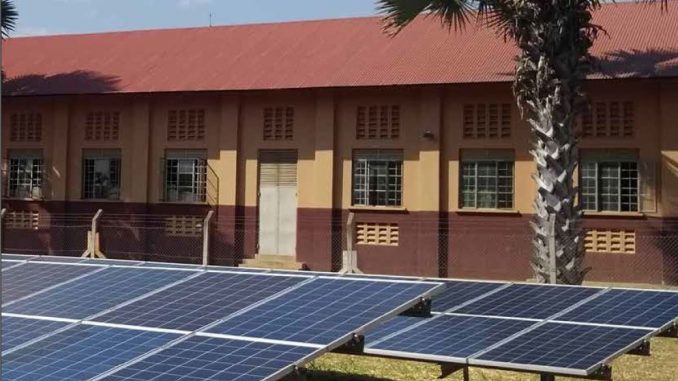
The dominant approaches to rural electrification in Uganda and Zambia leave great potential for economic development untapped. More than 85% of the rural population in Uganda and Zambia live without electricity.
Population growth has considerably outpaced connection rates in both countries in the last few decades. Labour productivity and rural income per capita gains have been slow and uneven. The Ugandan and Zambian governments have put forward ambitious electrification plans, viewing private sector-led off-grid energy as an important lever to overcome these challenges. The rapid growth of solar home system sales has been instrumental in providing lighting and phone charging services to many remote end-users. To fulfil the vision of energy-enabled economic development, sufficiently sized and reliable mini-grids currently constitute the most promising – but only infrequently deployed – solution for remote communities where reliable grid-based electricity will not become available in the near future.
This report presents the results of studying the three main stakeholder groups in the off-grid sector in Uganda and Zambia, (1) the private sector, (2) the public sector, and (3) communities in relation to off-grid energy for sustainable development.
(1) Mini-grid developers are designing innovative business models that go beyond delivering energy and towards supporting rural development. Developers are faced with a well-known conundrum: How do you provide sufficient and reliable electricity to meet more than customers’ basic needs without being able to charge cost-reflective tariffs or to rely on large subsidies? The solution several innovative mini-grid developers across sub-Saharan Africa are coming up with, referred to as Integrated Developers (ID) throughout this report, is to increase revenues from not only selling kWhs, but from selling electricity-enabled productive goods and services. This increases the per-kWh value-add of the mini-grid. Crucially, it also aligns community and private sector goals: As ID companies become integrated in rural value chains, economic development in the village directly improves companies’ financially viability.
The considerable potential of the model comes at the cost of increased complexity for the ID in terms of products offered, revenue model and required networks.
(2) Uganda’s and Zambia’s public sectors are fostering private sector-led off-grid electrification, but several barriers remain to unlock the full potential. The policy focus in both countries is much more on access per se, rather than on viewing electrification as one of several dimensions to foster sustainable development. As a result, off-grid solutions are often promoted and supported in isolation rather than as an integrated component of a broad and holistic sustainable development programme. Both Uganda and Zambia are currently overhauling their off-grid energy regulations in a bid to improve the sector’s enabling environment and attract further private sector investments. Our research identifies a number of inefficiencies, both in terms of structure (integration of on-grid and off-grid electrification, restrictive tariff construction and business model requirements, lack of focus on productive use of electricity) and decision-making processes (poor monitoring and evaluation, slow permitting and licensing, lack of inclusion of local-level stakeholders) that may hold progress back.
(3) Rural communities demand much more than basic needs – and the off-grid market is not yet providing solutions at scale. We find that rural households feel most burdened by agricultural work and other business activities, firewood fetching and household chores. All of these needs would benefit from sufficient and reliable electricity access. Basic needs of lighting, phone charging and light entertainment rank highest in community needs. Notably, the biggest percentage gap between current and desired uses of electricity exists for cooling, cooking and productive use of electricity, with between 40 and 50% of respondents wanting to use electricity for these services, but less than 10% being able to do so. While the off-grid market is making important strides towards meeting basic needs at scale through small-scale solar home systems (SHS), mini-grids which can deliver electricity for cooling, cooking and productive use are not yet available at sufficient scale. Furthermore, communities feel that they are left out of energy-related decision-making, making it difficult for community needs to be integrated into rural electrification strategies.
A concentrated effort from all stakeholders is required to capitalise on the significant opportunity of off-grid electrification for rural development. While significant steps have been taken in the past by all stakeholders, further actions are required to realise the potential of energy-enabled development. Businesses need to focus first on innovating for profitability and then on scaling for impact. The public sector needs to embed off-grid electrification into holistic development interventions that prominently feature productive use of electricity, and improve conditions for innovation in their respective countries. Communities need to be given the conditions to actively engage in concrete electrification decisions to maximise their value. Involvement from international donors is crucial in both countries but would benefit from better coordination between the many different initiatives before engaging national stakeholders. Crucially, as this report argues, the respective interactions between these stakeholders need to be re-imagined to realise the full potential of off-grid energy for development.
Excerpt from Project RISE practitioner report 2019, p. 4/5
